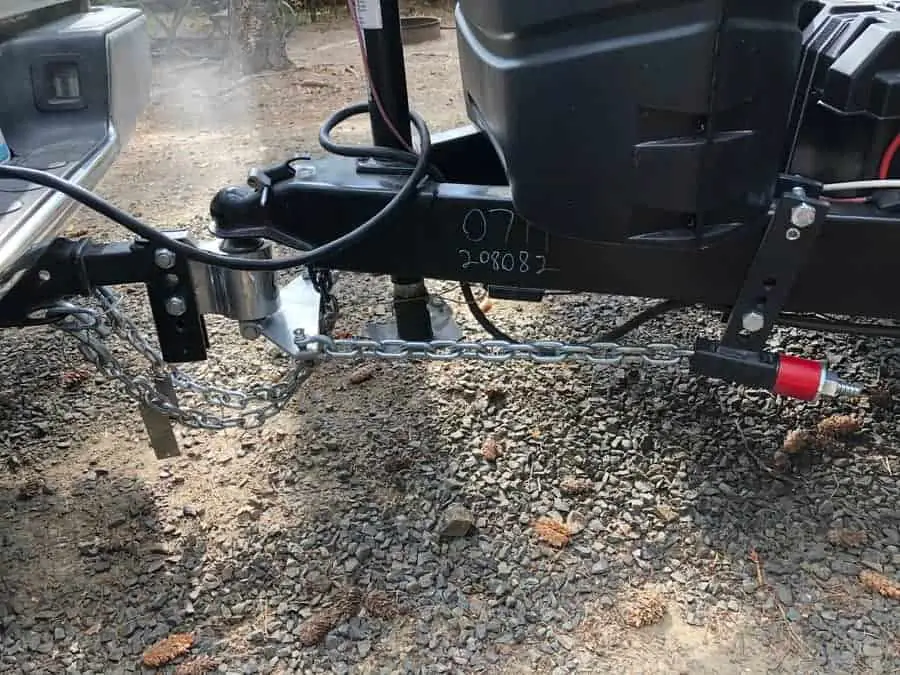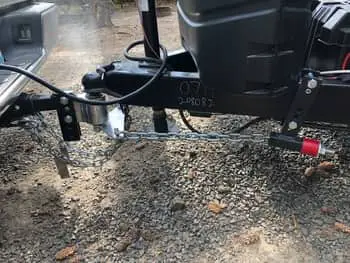Should a Travel Trailer be Level when Towing
We have seen many trailers going down the road that are very unlevel, have undercarriage damage, and are unsafe. Here is a guide on why you need to tow your travel trailer level as well as how to do it.
Should a travel trailer be level when towing?
Yes, it is highly recommended your travel trailer sit level when towing. To check this, use a level on the frame of the trailer when it is hooked up to your tow vehicle. If your trailer is unlevel, use the appropriate drop or rise hitch to make the trailer level to prevent sway and tire wear.
It is important to be as safe as you can when on the road in your travel trailer. A level trailer is a safe trailer. Follow the steps below to make sure you have the safest travel trailer on the road for your sake and the sake of others.
Why does my travel trailer need to be level?
There are many reasons you need your travel trailer to be level including: stability/sway control, aerodynamics, tire wear, axle ratings, braking performance, and ground clearance. Each of these effects the way a travel trailer drives and performs under the towing conditions.
Stability / Sway
A rear heavy trailer can cause excessive sway, if you are almost level, always try to be front down. A level trailer applies equal weight to all tires to provide the best stability when towing. Towing an unlevel trailer can be very dangerous as sway can happen at any given moment without warning. A semi passes by quickly, or you make a small jerk in the wheel to avoid a pothole, you want to go into your driving experience all hands on deck with all the cards in your favor. Keep your trailer level to help prevent excessive trailer sway.
Aerodynamics
If the front of your trailer is too high, you will catch air underneath your travel trailer and cause lift, this will slow you down and rapidly decrease your gas mileage. Travel trailers are designed to tow level, so their aerodynamics are made to get the best vehicle gas mileage if level. If off level, your tow just became that much harder.
Tire Wear / Blowout
If you are unlevel with more weight on one axle than the other, you can cause excessive tire wear to the tires with more weight on them. Along with excessive wear, this will cause those tires to heat more than the others. Excessive heat and more wear can cause a blowout on the road. We all know its never fun to have a blowout and change a tire on your tire.
Make sure to always bring a jack and be prepared to change a trailer tire. We have found this jack to be one of our favorites. When checking the air pressure in your tires, always check your spare. If you actually need to use it, you need to have air pressure. Nothing like replacing a flat tire with a flat spare. Read our article about balancing your tires as they can also be a cause of a blowout.
Last update on 2024-09-29 / Affiliate links / Images from Amazon Product Advertising API
Axle Ratings
One thing many forget about is their axle ratings on their trailer. This is another important reason to keep your travel trailer level when towing.
For an example, lets look at a travel trailer with two 3,500 pound axles with a dry weight of 5,000 pounds and a cargo carrying capacity of 800 pounds. This would mean your maximum trailer weight can be up to 5,800 pounds. If your trailer is level, you are placing about 2,900 pounds of weight on each axle. If you have 70% of your weight towards the back you essentially now have 4,060 pounds on the rear axle and 1,740 pounds on the front axle. The travel trailer in this example is now overloading its rear axle by 560 pounds. An overloaded axle can cause damage or even failure.
Tip: This is another important reason to get high capacity axles when choosing a travel trailer to purchase to give you that extra safety net and extra cargo carrying capacity.
Breaking Performance
If your weight distribution is off due to an unlevel trailer, the tires will be in contact with the ground at different pressures. With these different pressures on the ground, your brakes may not operate properly. For example, if the trailer is high in the front, your front tires may not have good contact. When you hit the breaks, your front tires may skid and not provide any stopping power while the back don’t have enough breaking power to stop the trailer.
This scenario works vise versa if you are front down. Your rear tires will not provide ample contact to the pavement and be lacking in their breaking properties. For the safety of the tow vehicle and other drivers, your travel trailer should be level simply for this reason especially if you are on hilly terrain.
Ground Clearance
How many times have you seen someone lose their sewer dump pipe or have a bent bumper on the end of their travel trailer. Conversely, have you seen someone with a bent tongue jack or bent leveling jacks?
Lots of time time when we see a trailer that is unlevel, it has bent jacks or other items underneath. This is due to the trailer being unlevel, if a trailer is 4” off level, then you just lost 4” of ground clearance. Our trailer only sits about 15” off the ground so if we lost 4” of clearance in the rear and went off a driveway or a steep curb, we would hit and damage our jacks or sewer pipe. Also if you are off towards the front, going down a curb can bounce the trailer into the ground and damage your tongue jack.
It is important to keep your trailer level to not damage any items in the undercarriage.
Single Axle Trailers
If you have a single axle, leveling your trailer while towing is still important. You may not get excessive tire wear or decreased breaking performance, but for stability and aerodynamics, it is still very important.
How to Level your Travel Trailer for Towing
Leveling your travel trailer is simple and takes only a few tools.
- Tape Measure
- Level Ground
- Level
Step by Step guide to level your travel trailer for towing
Now that we know how important it is to have a level trailer, follow these 11 steps in order to ensure you have the correct towing equipment in order to tow your trailer as level as possible.
- In order to level your travel trailer for towing, you will need to start on level ground. If your driveway is not level, stop by a school or other parking lot and look for the most level space. You can use your level to find the best spot.
- Load your travel trailer as you would if you were to go camping. With items in their appropriate storage spaces.
- Drive your trailer to the spot you found which is most level.
- Disconnect your travel trailer from your tow vehicle and drive forward.
- Use your level on your frame and your tongue jack to get your trailer level.
- Double check you are level with your tape measure under your frame in different spots on your trailer.
- Measure the height receiver on your vehicle. Example measurement 17”
- Measure your trailer coupler height. Example Measurement 15”
- Subtract those measurements. For example, 17”-15”= a 2 inch drop ball mount.
- Hook your trailer back up and measure how much your vehicle squats from the weight of the tongue. Example 1” squat when connected.
- Add the squat number back into your calculation to get a 1” ball drop mount needed.
Invest in the correct hitch

These simple steps can get you the correct ball mount needed to tow your trailer level. Many users will find an adjustable ball mount highly recommended as you can adjust on the fly without the need to purchase additional mounts at different sizes. These are a great value and can save you in the future if you need to adjust height or tow a different trailer.
If you are using a weight distribution hitch, these typically are adjustable and have similar instructions to find out the ball mount height. We own the Andersen No Sway hitch which is adjustable, weight distribution, and has sway control. Learn more about weight distribution hitches from our Weight Distribution Hitch Guide.
Last update on 2024-09-29 / Affiliate links / Images from Amazon Product Advertising API
Conclusion
As you can see there is only positive reasons to keep your travel level, not only for the safety of you, others, but for the ease of twoing and gas mileage. The simple 11 steps above make it easy to find out which ball mount is right for you.
How far off level can my travel trailer be?
It is recommended that your travel trailer can be up to 1” off level in either direction. If you have the appropriate tongue weight, your trailer should be 1” lower in the front to prevent sway and be more aerodynamic. If you are not within 1” of level, buy the appropriate hitch.
Do I need a drop hitch?
You may need a drop hitch depending on your tow vehicle and trailer height. Measure your receiver height as well as your couple height with your trailer level. Subtract those numbers to find out the drop or rise you will need for your vehicle.
Last update on 2024-09-29 / Affiliate links / Images from Amazon Product Advertising API
Be the first to be notified about FREE tips, hints, coupon codes, and email-exclusive information. All for FREE!















